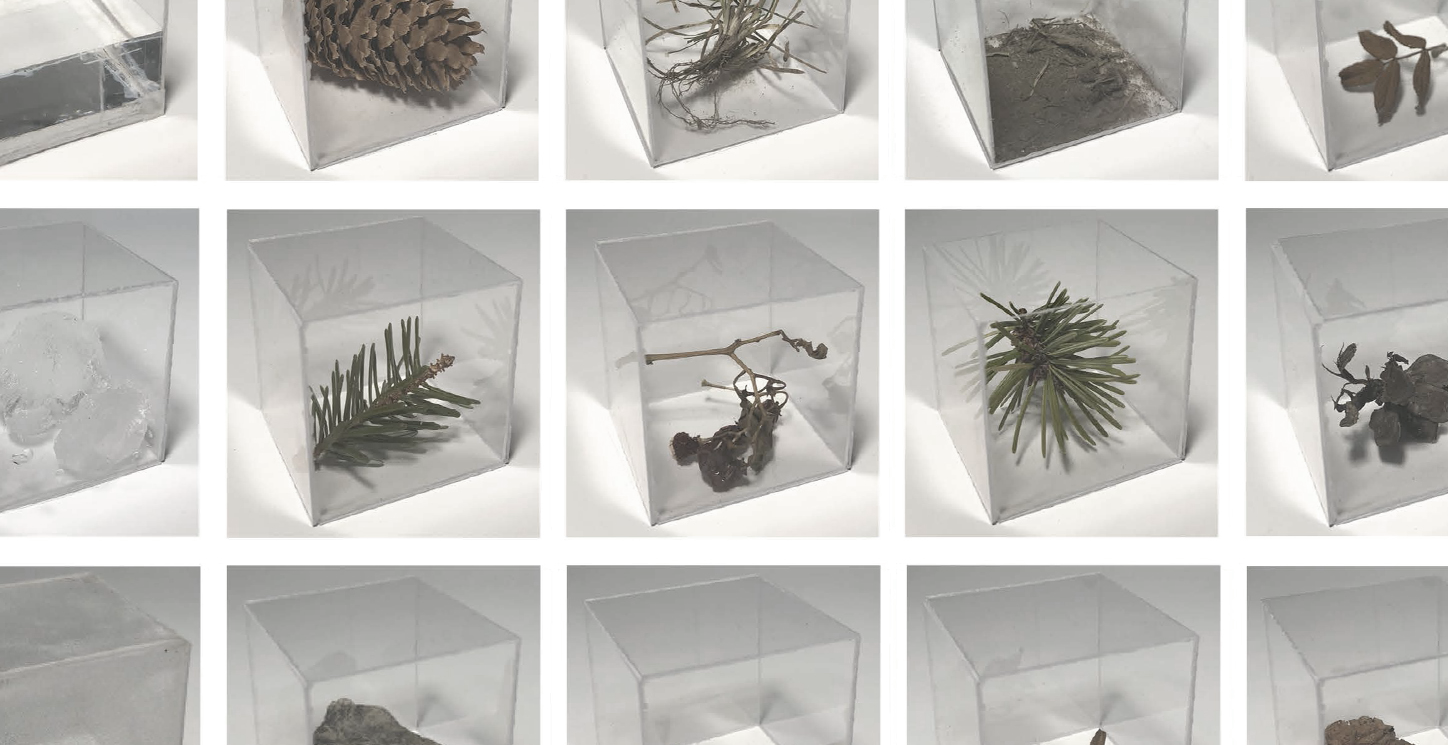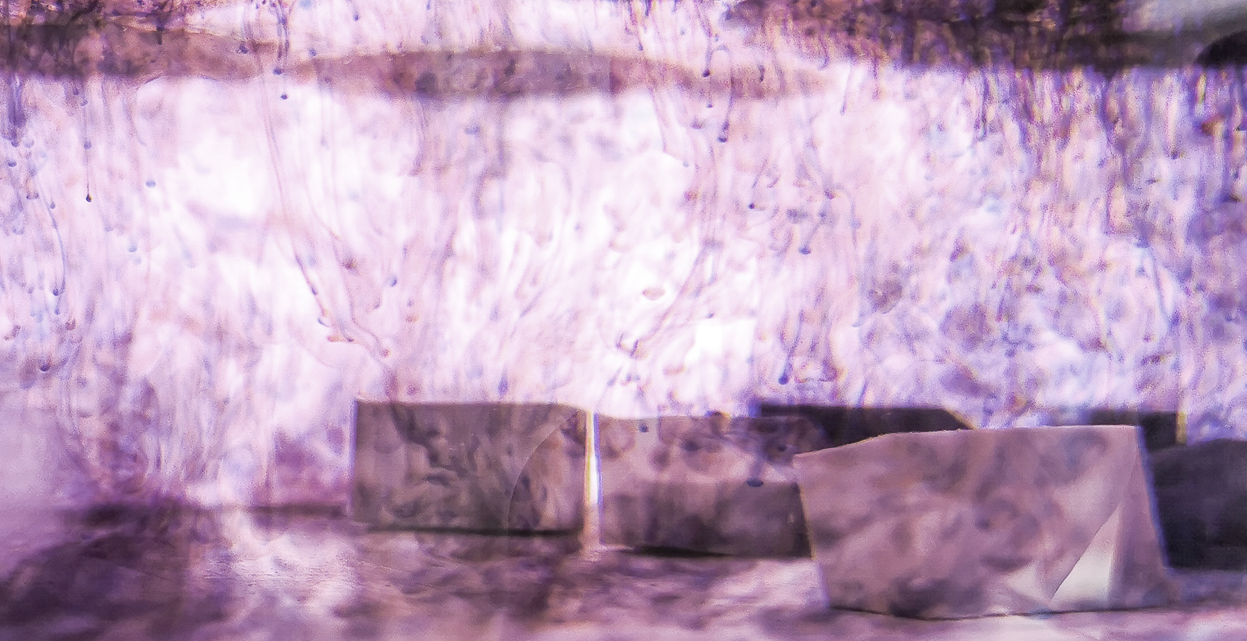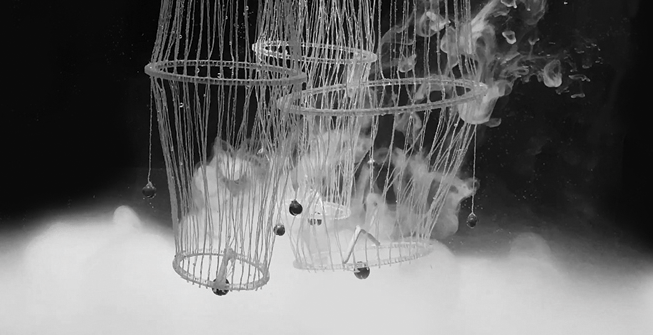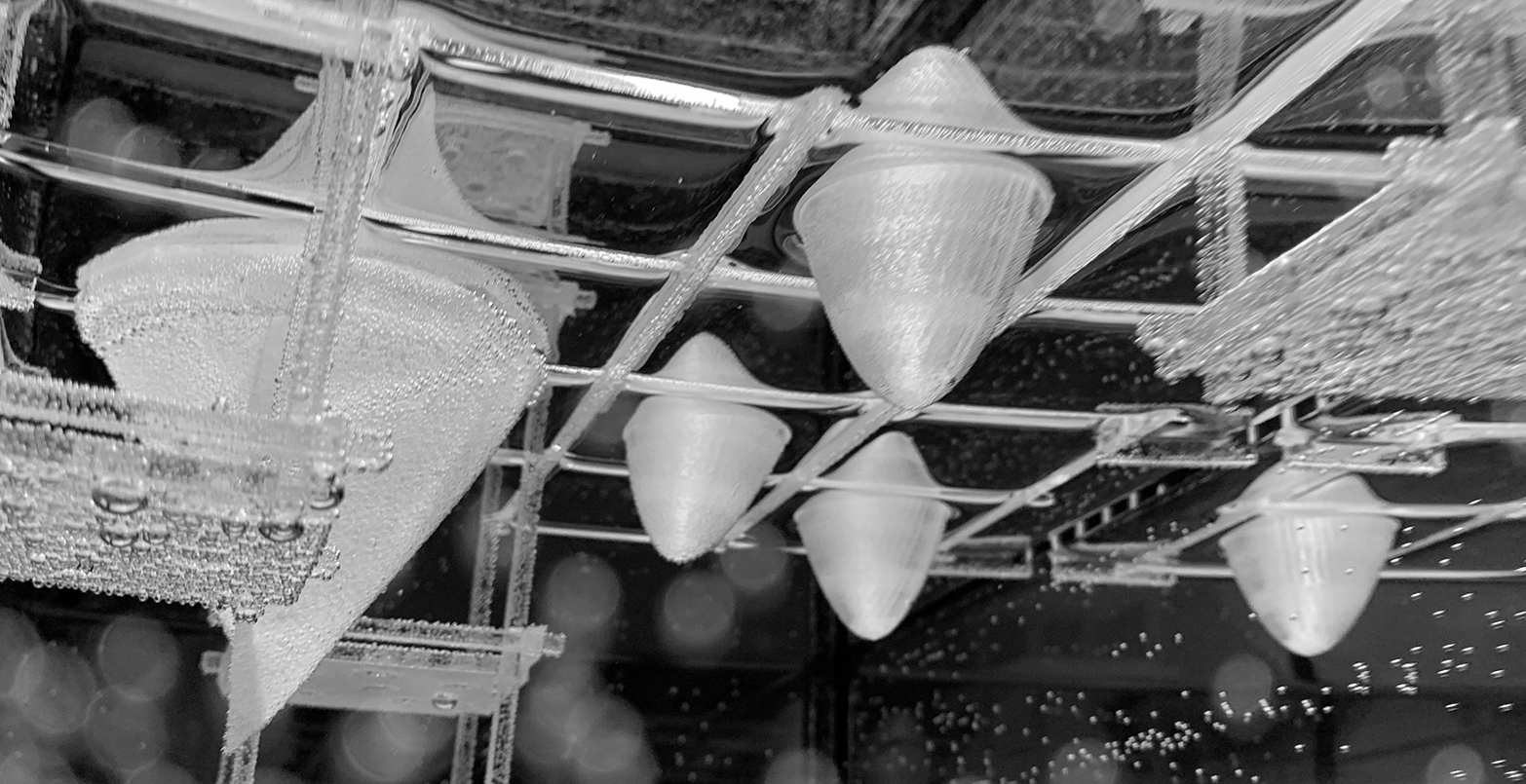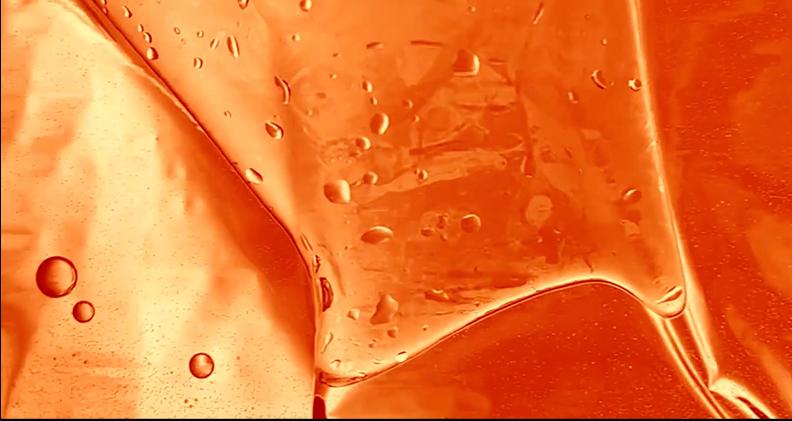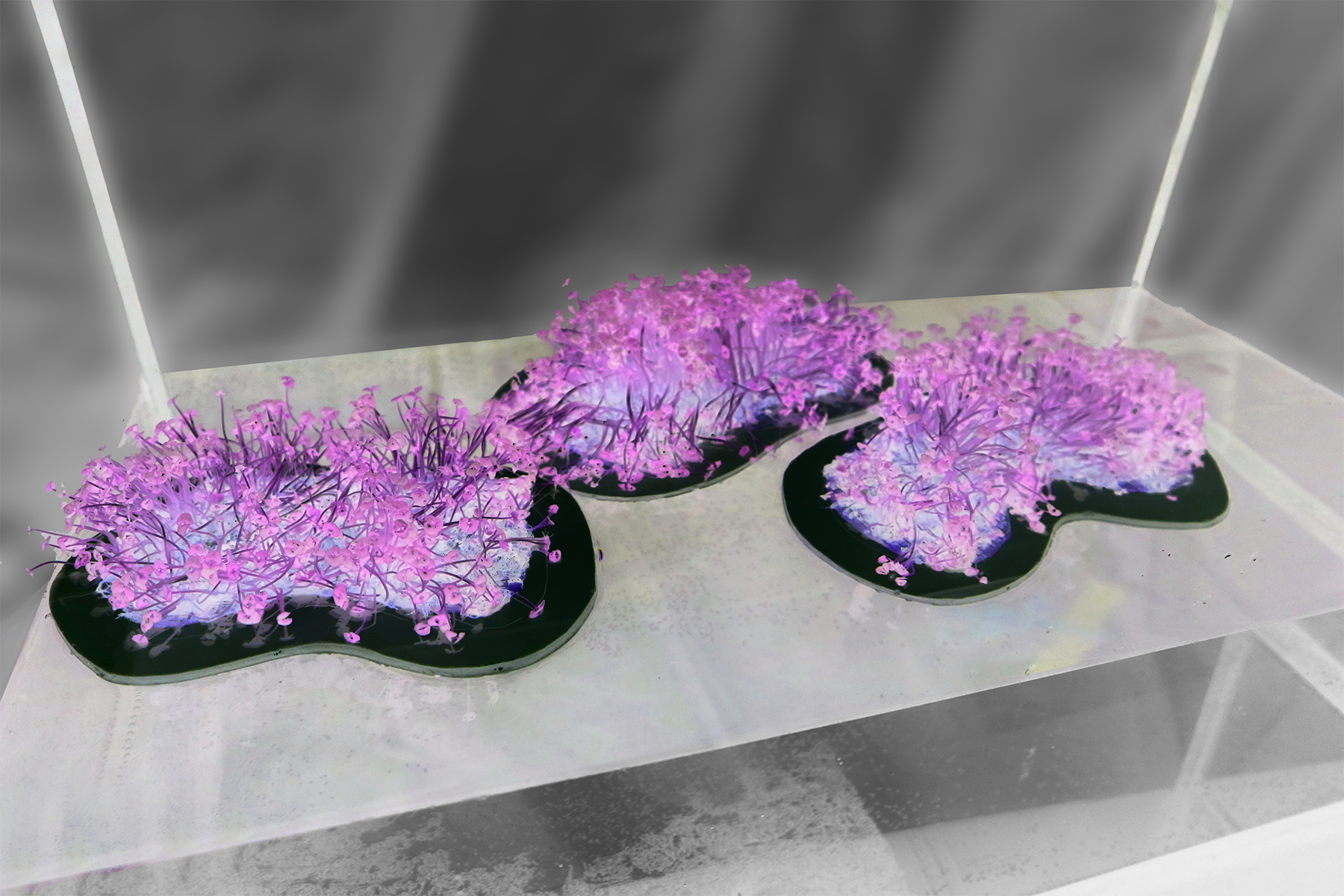Eilidh Sutherland
Tank Worlds : Hamilton Harbour
Topographies Over Time
This project investigates dissipating topographies, making links between model material studies and existing material formations associated with contamination at Hamilton Harbour. The project began with an investigation of a series of disappearing topographies constructed of layers of ice and viscous material placed on plexiglass substrates with voids of varying sizes. As the strata melt, impressions of the plate were left on the cast, acting as a record of the interaction between material processes and geometries of the fixed substrate. Material remnants dripped rhythmically through void into the base of the tank, constructing a new, subterranean topography. The drips were haunting, analogous to a ticking clock.
These double topographies informed the development of site strategy, which proposes a future in which the steel industry is obsolete and the site is transformed into a remediation and recreational topography for biking, hiking, and skateboarding. A series of operations on existing material piles including erasing, capping, and shifting transform the industrial landscape into an urban park. A new building operates as another double topography, collecting, filtering and funneling industrial material into a new space of containment. Within the harbour, contaminated sediment is capped, and a system of buoys reveals the processes of constructing these new topographies occurring below water. Together these topographies elucidate, animate and activate processes of transformation over time.


A series of disappearing topographies

Mapping of topographies at Hamilton Harbour

Strata melting / constructing new topographie

Collecting, filtering, funneling industrial material into a new space of containment

Materual remnants gather in the base of the tank

Buoy system / revealing processes of remediation occuring below water

The facility operates as a double topography




